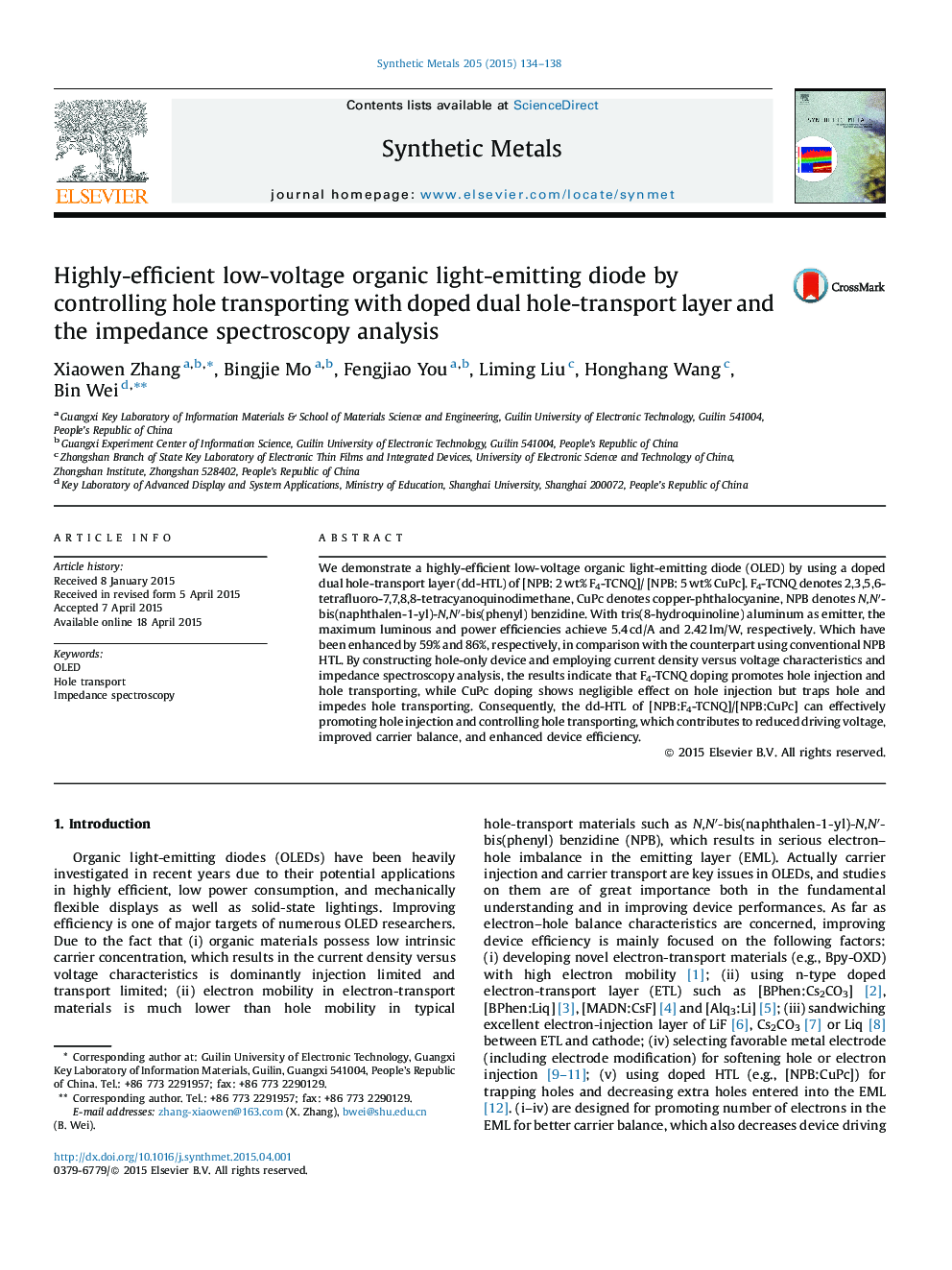| Article ID | Journal | Published Year | Pages | File Type |
|---|---|---|---|---|
| 1440409 | Synthetic Metals | 2015 | 5 Pages |
•Efficient OLED with a doped dual hole-transport layer (dd-HTL) is demonstrated.•dd-HTL engineers hole injection and transport, which improves carrier balance.•Impedance spectroscopy is used to characterize hole injection and transporting.
We demonstrate a highly-efficient low-voltage organic light-emitting diode (OLED) by using a doped dual hole-transport layer (dd-HTL) of [NPB: 2 wt% F4-TCNQ]/ [NPB: 5 wt% CuPc]. F4-TCNQ denotes 2,3,5,6-tetrafluoro-7,7,8,8-tetracyanoquinodimethane, CuPc denotes copper-phthalocyanine, NPB denotes N,N′-bis(naphthalen-1-yl)-N,N′-bis(phenyl) benzidine. With tris(8-hydroquinoline) aluminum as emitter, the maximum luminous and power efficiencies achieve 5.4 cd/A and 2.42 lm/W, respectively. Which have been enhanced by 59% and 86%, respectively, in comparison with the counterpart using conventional NPB HTL. By constructing hole-only device and employing current density versus voltage characteristics and impedance spectroscopy analysis, the results indicate that F4-TCNQ doping promotes hole injection and hole transporting, while CuPc doping shows negligible effect on hole injection but traps hole and impedes hole transporting. Consequently, the dd-HTL of [NPB:F4-TCNQ]/[NPB:CuPc] can effectively promoting hole injection and controlling hole transporting, which contributes to reduced driving voltage, improved carrier balance, and enhanced device efficiency.
